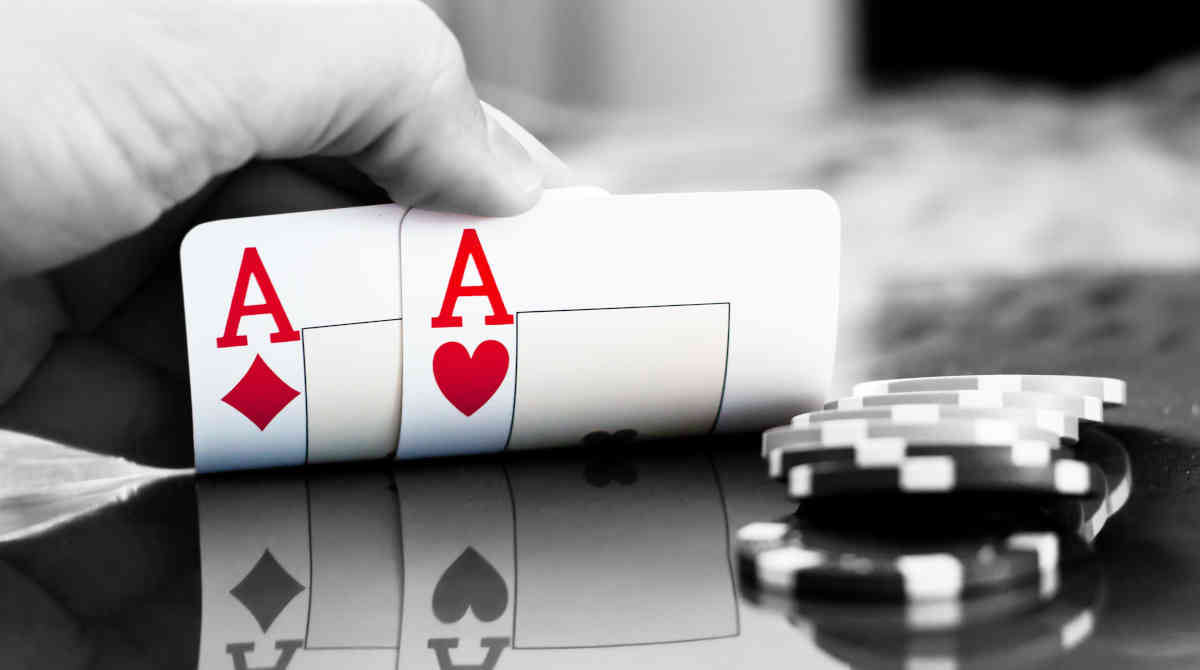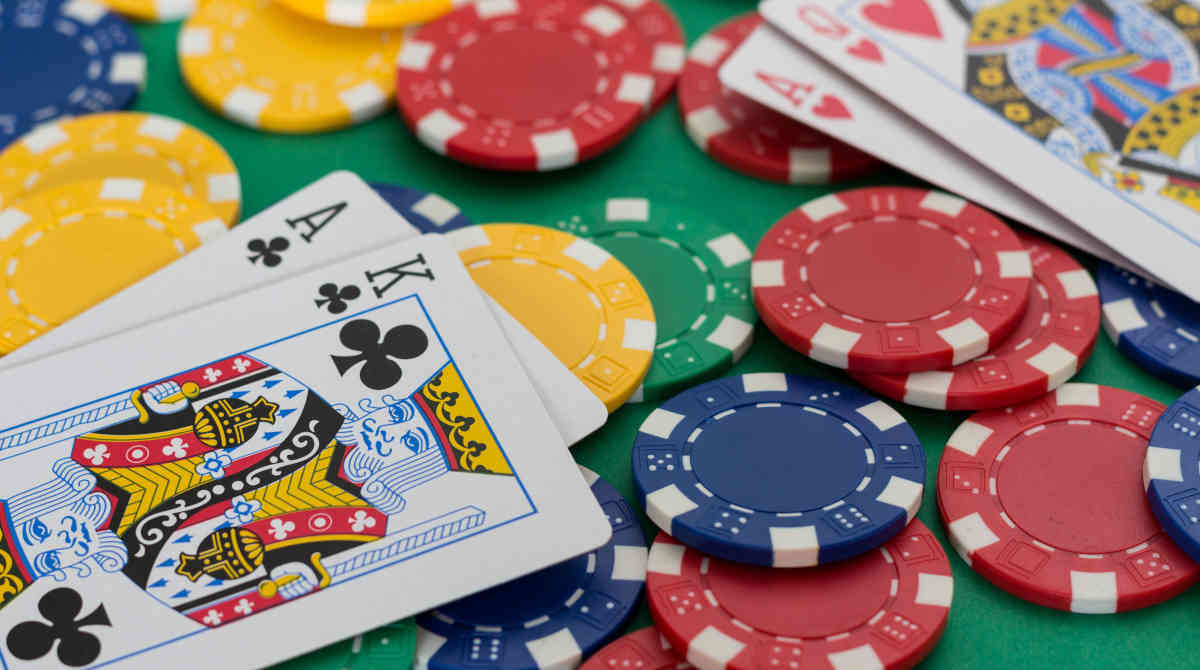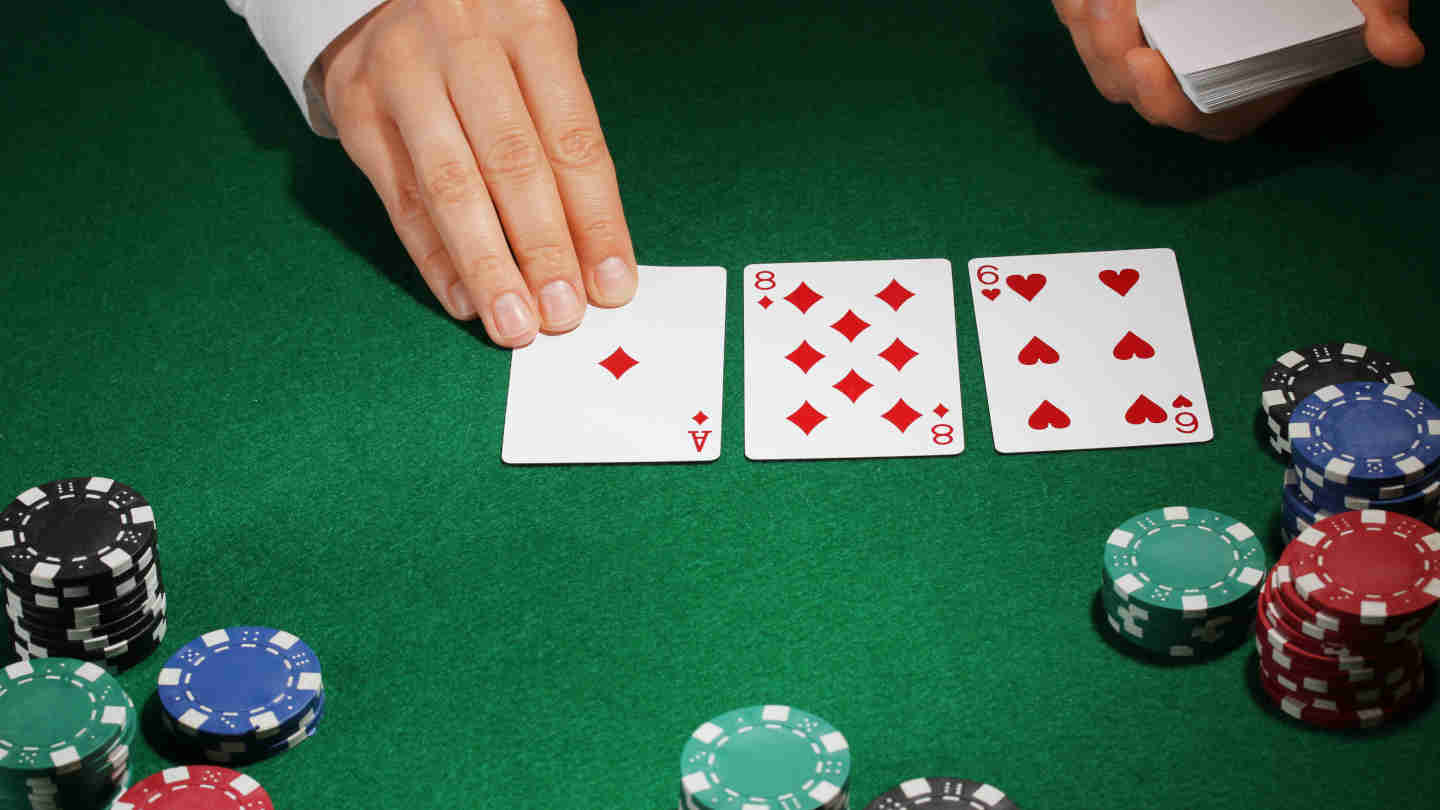Poker Squeeze Play – Which Hands Make the Most Sense for Squeezing?

8 minutes
The squeeze play is a powerful tool in poker that can exert tremendous pressure on opponents and increase your chances of winning pots.
However, choosing the right poker hands to execute this play is crucial for its success.
This article delves into intricacies of squeeze play poker and explores the hands that make the most sense for squeezing.
What Is a Squeeze in Poker?
A squeeze play in poker refers to a tactical move when a player strategically exploits other players’ aggressiveness by re-raising after a raise and one or more calls.
The squeeze play involves capitalizing on the initial raiser’s or the callers’ perceived weakness by applying significant pressure with a substantial re-raise.
Poker players employ the squeeze play for several reasons.
Exploiting Weakness
Squeezing takes advantage of the perceived weakness of the original raiser and the callers. Your goal is to pressure them into folding their hands and potentially take down the pot without going to the flop.
Building the Pot
If you have a strong hand that plays better against fewer opponents, squeezing is a great way to get heads up against one other player, while also increasing the size of the pot considerably.
Gaining Fold Equity
Since players who made the call have a capped range, squeezing increases your immediate fold equity and your fold equity through the rest of the hand.

Establishing an Aggressive Image
If you think you don’t have an aggressive enough image at the table, one of the ways to change this is to increase your squeezing frequency.
Keep in mind that this play often significantly impacts the dynamics at the table, since players tend to interpret it as taking advantage of the situation.
Taking Initiative
By making a squeeze play, you are seizing control of the hand. You are dictating the betting action and putting your opponents on the defense. This forces them to make difficult decisions under pressure.
Factors to Consider Before Squeezing in Poker
Like all poker concepts, squeezing is not a one-fits-all solution. For the most part, its effectiveness will depend on several factors.
Position
Position is critical to evaluate before executing a squeeze play in poker. Squeezing from a late position, such as the Cutoff or the Button, is generally more advantageous.
Since you act after most of your opponents, this positional advantage allows you to understand the hands’ dynamics better.
It provides an opportunity to estimate the strength of the original raiser and callers, adapt the sizing of the squeeze bet, and apply maximum pressure.
Moreover, being in late position allows for greater control over the pot and increases the chances of the opponent folding to the squeeze, as they must act before you on future streets.

Stack Sizes
Stack sizes are an essential factor you should consider before attempting a squeeze play in poker.
It is more effective to execute a squeeze play when you have a larger stack than the original raiser and callers.
This creates significant pressure on your opponents, as they will be playing a larger pot out of position in a situation in which you have the initiative.
Additionally, a larger stack allows you to make a larger re-raise, increasing your fold equity and chances of winning the pot uncontested.
On the other hand, attempting a squeeze play with a short stack can be risky, as it diminishes the fold equity and may lead to you committing to the pot with a weaker hand.
Opponents’ Tendencies
Assessing opponents’ tendencies is another vital factor to consider when squeezing. Squeezing is most effective against opponents who are more likely to fold to aggression.
Tight and risk-averse players, who tend to play fewer hands and fold easily, are prime targets for a successful squeeze.
However, it may be less effective against loose, aggressive opponents who are more inclined to call or re-raise.
Understanding opponents’ playing styles, previous actions, and their likelihood of folding to pressure helps determine the viability of the squeeze play.
Adapting your strategy based on these tendencies will enhance your chances for a profitable outcome.
Range Assessment
Evaluating the likely ranges of the original raiser and callers providers you with an estimate of how they might perceive against a squeeze bet. For this reason, it is always important to consider your opponents’ likely hands before attempting this play.
Squeezing is most effective when your opponents don’t have a strong range or if they are holding marginal or speculative hands. Conversely, if the opponents’ range consists of strong hands, it reduces the chances of success.
Observing their actions, previous betting patterns and table dynamics will help you determine their potential range.
Accurate range assessment enables you to make informed decisions regarding the sizing and timing of the squeeze play, increasing the likelihood of inducing folds and winning the pot.
Table Dynamics
Table dynamics play a significant role in considering a squeeze play in poker. Therefore, assessing the overall dynamics of the table provides valuable context for executing a successful squeeze.
Factors such as player interactions, previous hand actions, and the table image influence the effectiveness of the play.
A table with tight and passive players is more favorable for a squeeze, as these table dynamics are more likely to lead to folds.
Additionally, identifying patterns of aggression or weakness among opponents can help estimate their response to a squeeze.
Adapting the squeeze play strategy to match the specific table dynamics increases the chances of exploiting favorable situations and maximizing the profitability of the play.
Hands That Make Sense for Squeezing in Poker
Choosing the right hands for a squeeze can significantly impact its effectiveness. Certain types of hands are better suited for applying pressure and inducing folds from opponents.
Below we explore the hands that make the most sense for squeezing, including premium hands like high pocket pairs, high-suited connectors, semi-premium hands like suited aces and connectors, and hands with good blockers.

Premium Poker Hands
- Pocket pairs (e.g., AA, KK, QQ): Premium pocket pairs are strong candidates for squeezing because they benefit from both increasing the pot and going post-flop heads up.
- High-suited connectors (e.g., AK, AQ, KQ): These hands offer both high-card value and potential for strong draws, making them ideal for squeezing and applying pressure.
Semi-Premium Poker Hands
- Suited Aces (e.g., AT, A9): Suited aces have the potential to make strong flusher or top pair/good kicker hands, making them valuable for squeezing when in the right situation.
- Suited connectors (e.g., JT, T9): Suited connectors allow you to make straights or flushes and apply maximum pressure post-flop when you flop a draw.
Poker Hands With Blockers
- Ace and king blockers: Holding an ace or a king as a blocker reduces the likelihood that your opponent has a premium hand, making it more likely that they will fold to a squeeze play.
Using these hand categories is a great starting position if you are looking to add the squeeze play to your poker arsenal. It increases the chances for success and maximizes their profit potential.
Common Mistakes to Avoid
When executing a squeeze play in poker, avoiding common mistakes is crucial to maintaining a profitable poker strategy.
Mistakes like squeezing with weak hands, disregarding stack sizes and position, and failing to read opponents accurately can lead to costly mistakes.
By learning from these pitfalls, you can develop or refine your approach to squeezing and increase your win rate.
Squeezing With Weak Hands
Squeezing with weak hands is new poker players’ most common mistake when incorporating the squeeze play into their poker arsenal.
Weak hands lack the inherent strength and potential to apply sufficient pressure on your opponents, making you rely only on your table image and making the squeeze less effective.
Squeezing with hands that are easily dominated or have minimal post-flop potential can lead to unnecessary risk and diminished fold equity.
It is essential to focus on hands with solid strength and playability, such as premium pairs or strong-suited connectors with a higher chance of making a strong hand or a strong draw.
Ignoring Stacks Sizes and Positions
Ignoring stack sizes and positions is another significant mistake to avoid when squeezing.
Stack sizes directly impact the effectiveness of a squeeze, as larger stacks allow for more substantial re-raises and increased fold equity. Therefore, failing to consider stack sizes can result in ineffective or costly squeezes.
Additionally, position plays a crucial role in squeeze plays. Squeezing from a late position gives you a positional advantage and provides you information and control over the hand.
On the other hand, ignoring position can lead to missed opportunities or being caught in unfavorable situations.
By carefully assessing the stack sizes and position, you set your squeeze play for success.

Failing to Consider Opponents’ Ranges
Finally, making the correct squeeze play is only possible after considering the opponents’ ranges.
Understanding the likely holding of the original raiser and callers is crucial for a successful squeeze. Neglecting to assess opponents’ ranges can result in misguided bluff attempts or ineffective squeeze plays.
It is essential to consider factors such as their playing style, previous actions, and table dynamics to estimate the range of hands they might be holding.
This will allow you to make more informed decisions, increasing the likelihood of inducing folds and maximizing profitability.
Final Thoughts on Squeezing in Poker
Hand selection plays a crucial role in the success of a squeeze play. Choosing the right hands, such as premium and semi-premium holdings, and hands with blockers increases the effectiveness and, thus, the profitability of the squeeze.
To ensure successful squeezing, avoiding common mistakes, such as squeezing with weak hands and neglecting stack sizes, positions, and opponents’ ranges, is essential.
Mastering the squeeze play requires experience, observation, and adaptability, like any poker concept. Continual practices and strategy refinement will enhance your abilities to execute successful squeeze plays and gain an edge over your opponents.
- Poker Squeeze Play – Which Hands Make the Most Sense for Squeezing? - August 10, 2023
- How to Play Low Pocket Pairs in Texas Hold’em - July 29, 2023
- How to Make Deep Runs in MTTs More Often - July 22, 2023















